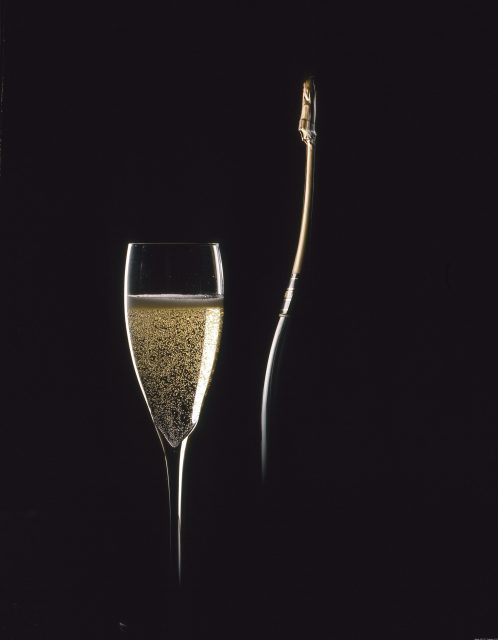This website uses cookies so that we can provide you with the best user experience possible. Cookie information is stored in your browser and performs functions such as recognising you when you return to our website and helping our team to understand which sections of the website you find most interesting and useful.
Champagne releases 2022 shipment figures for the US
In 2022, shipments of Champagne to the US reached a value of nearly $1 billion from a total of 33.7 million bottles – a marginal decline on 2021’s volume figures, which were an all-time record.

Comité Champagne has just released a 2022 US market update and future outlook. As previously reported by the drinks business, global Champagne shipments in 2022 were the highest in 15 years, totalling 325.5 million bottles, worth over $6.6 billion/£5.33 billion.
“This is a proof of dynamism of the Champagne market in both volume and value,” said Gaëlle Egoroff, Comité Champagne Director of Protection and Promotion. “We can see the unique place that it holds in the hearts and the minds of consumers.”
Notably, the US remains Champagne’s number one export market worldwide, outside of France. In 2022, US volumes reached 33.7 million bottles shipped, with a total value of nearly $1 billion. This marks a 1.1 percent decline from 2021 figures, an all-time record. The marginal decline stemmed from an overwhelming global demand for Champagne in 2022, coupled with difficulties delivering those demands to the United States.
Trends
Comité Champagne credits the uptick in Champagne consumption in the US to emerging trends. These include by-the-glass pours, coupled with a growing thirst for rosé, low-dosage, and prestige cuvée Champagnes.
Remarkably, Americans rank first among other countries as fans of rosé Champagne. Prestige cuvées represent the second US largest segment by value. More surprisingly, US imports of low-dosage Champagne exceeded 1 million bottles in 2022, an increase of over 50% from the previous year.
“American people have learned to appreciate Champagne,” said Egoroff. “The more they appreciate Champagne, the more they want to discover the diversity of Champagne.” Consequently, more US sippers desire “Champagne moments” beyond traditional celebrations and special events. Instead, they seek intimate, “little celebrations,” everyday after work, at home, and with friends.
Interestingly, American consumers lag behind in their EU counterparts in understanding Champagne’s origins, a problem Comité Champagne plans to tackle with future trade and consumer education.
Future
Champagne’s growers also enjoyed a bountiful 2022, both in grape quality and quantity. However, climate change continues to loom large over future harvests. “The future is not predictable, but we can prepare for it,” counsels an old Champenois adage.
Consequently, Comité Champagne unveiled a bold new plan to address the next 10 years, and beyond. The plan pivots around three main objectives: ensuring Champagne remains available, desirable, and exemplary. This means adapting to climate change, consumer demand, and rising responsibilities.
To that end, Comité Champagne increased the annual budget by 50% through 2025 with funds derived from grapes sold, and bottles sold or exported. Monies will pay for research, development, and sustainability programs, while strengthening fundamental missions.
This includes a new Research & Development centre, which will double the existing laboratory size by 40%. Other improvements include ‘state-of-the-art’ equipment, resized fermentation room, experimental cellar, a doubled-in-size tasting room, and one-hectare experimental facility.
Studies will focus on studies such as the prevention of flavescence dorée, a deadly, vine-yellowing disease spread by the leafhopper insect. Some liken its potential for vineyard destruction to that of phylloxera in the late 19th century.
“We need to measure, we need to test, we need to experiment collectively, so that all the growers, all the houses, whatever the size, can implement what is collectively recommended,” stressed Egoroff. “We need to collectively study the disease, and collectively study climate change, in order to propose solutions that will make everyone improve.”
Sustainability
Additionally, Comité Champagne intends to develop regulation tools regarding yields, particularly during bad harvest years, to mitigate business losses. Most dramatically, the CIVC initiated the first carbon footprint assessment for a wine region in 2023. They intend to reach net-zero in 2050, although they remain pragmatic in final estimates, which fall closer to 75-80%.
Any differences they hope to offset by investing in local carbon sinks, like riverside biodiversity buffers and forests. Furthermore, Comité Champagne hopes to achieve 100% voluntary, sustainable vineyard certification by 2030, with nearly 60% certified at this time.
“To sustain the availability, and the quality of its wine, Champagne is really placing sustainable development at the heart,” concluded Egoroff. “We will do that by experimenting with new value tools, and searching for new techniques, in order to implement the best strategies to anticipate the effects of climate change, but also to maintain the excellence. The idea is not to choose between producing and having quality.”

